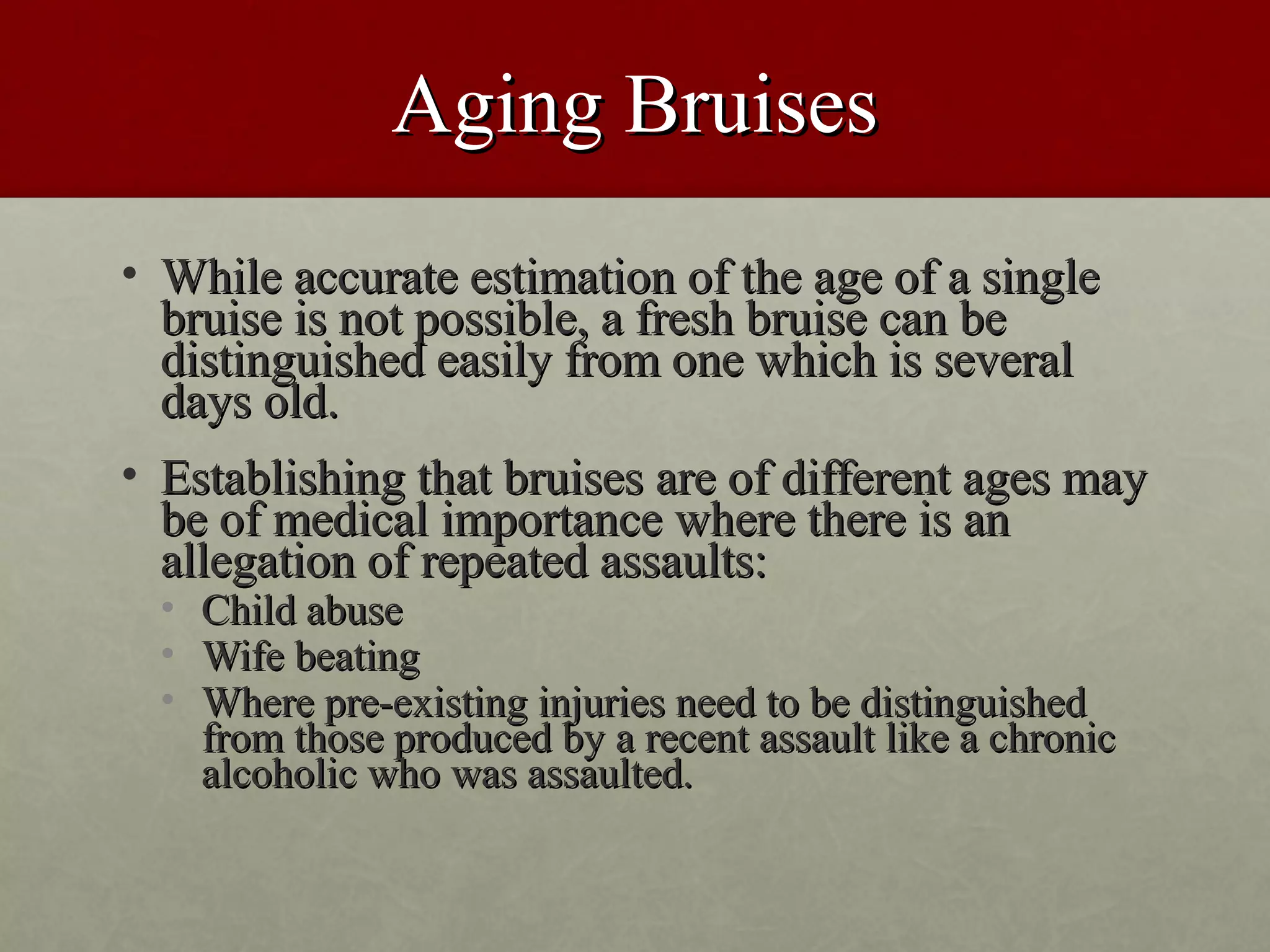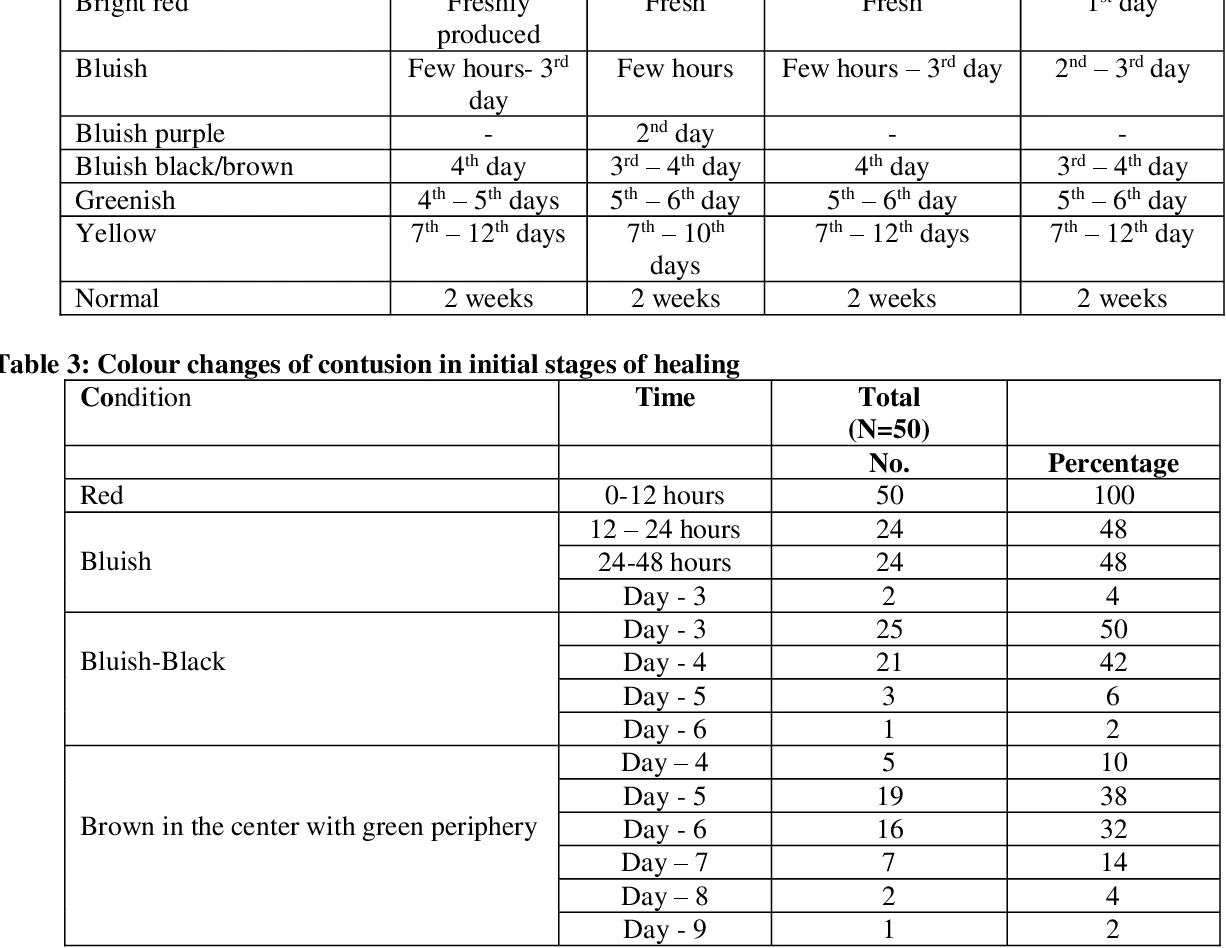
When Bruises Make Us Wonder
Have you ever stared at a bruise—yours or someone else’s—and thought, “Hmm, is this new?… Or was it hiding there all along?” Maybe your curiosity kicked in after a clumsy stretch at the gym (that rogue kettlebell, I’m looking at you). Or maybe, like me, you remember a time when a kid’s mystery bruise led to a full-on family investigation. Whatever brought you here… you’re not alone. Figuring out the story behind a bruise feels personal. And sometimes, it really matters.
That’s why age of bruises forensic is a thing—at the crossroads of medicine, real-life drama, and that oh-so-human urge to understand what happened. So, let’s ditch the dull textbook talk and dive straight into the wild, weird world under your skin…
What Bruises Say Without Words
I’ll be honest: Bruises are basically your skin’s version of text messages. Some arrive loud and clear—”Hey! You crashed your bike.” Others? Still a total mystery days later. But they all reflect what’s going on beneath the surface, literally.
So, What Is a Bruise… Like, Really?
Quick science break—promise, just a blip. A bruise appears when tiny blood vessels, called capillaries, break under the skin. Picture it: Your sneaker clips a coffee table and blood sneaks into the squishy tissues. No cuts. No open wounds. Just… color, swelling, and that angry little ache when you poke it. As days go by, your body gets to work picking up the pieces—fancy word, “healing,” but more on that in a sec.
Let’s Use a Table (Because Everyone Loves a Cheat Sheet)
| Time Since Injury | What’s Happening Inside | Bruise Colors |
|---|---|---|
| 0–24 hours | Capillaries burst. Blood pools. | Red, pink, or blue |
| 1–3 days | Inflammation. Blood breaks down. | Blue, deep purple |
| 4–7 days | Cell clean-up crew arrives. | Greenish, maybe some yellow |
| 7+ days | Wrapping up. Leftovers (bilirubin, hematoidin). | Yellow, brown |
Sound familiar? I’ll never forget complaining about a “never-ending” yellow ankle bruise after a clumsy fall—my grandmother just nodded, “That’s your blood cleaning house.” She wasn’t wrong…
Can Bruise Color Tell the Date?
Here’s where most of us get tripped up (myself included): Is bruise color a reliable clock? Short answer: sometimes… but often, it’s messier than it seems. Let’s unpack the why.
Blue, Black, Green, Yellow… What Gives?
Thanks to some wild body chemistry, bruises don’t follow a perfect schedule. First, there’s hemoglobin—the stuff that makes red blood cells red. As your bruise “ages,” hemoglobin breaks down into new pigments, switching up colors along the timeline. According to a classic forensic review, yellow is your big clue: if you spot true yellow (not kinda orange), your bruise is likely not fresh—think 18 hours or more.
But here’s a curveball—on deeper or larger bruises, or if you’re older (or just, you know, have skin that’s lived a little), yellow can show up sooner or stick around longer. Kids? Same deal, but faster healing can shuffle the color deck. Fun, right?
Anecdote Time—Color Confusion!
My friend Jasmine, who has beautiful deep brown skin, once showed me what looked like a harmless shadow on her arm. Turns out, it was a four-day-old bruise from aerial yoga. She barely noticed the change, and neither did her instructor… but it was there, just hiding out. Science backs this up: Changes in color are often subtle on darker skin, making the age of bruise based on color harder to guess. So, what about people with super fair skin? Purples and reds stand out, but those yellow cues might still sneak by unless you’re looking for them.
Beyond the Naked Eye: Cool (and Weird) Forensic Tools
Here’s the kicker—the human eye can’t always be trusted. That’s why the science of age of bruises forensic runs deeper than just squinting and guessing “day two… or week three?” Forensic pros have a few tricks up their sleeves.
Histology (Microscope Time!)
This might sound like mad science, but it’s just looking at tiny slices of bruised skin under a microscope. Experts see specific changes at different bruise ages—like, do you spot more fresh red blood cells or the “janitor” cells (macrophages) sweeping up? Early bruises (less than 24 hours) show new bleeding; around days 3–7, you’ll see more cleanup action and odd pigments like hemosiderin and hematoidin. It’s wild how predictable our bodies can be… until they aren’t as confirmed by studies on autopsy bruises.
Bilirubinometers and Spectrophotometry (Say That Ten Times Fast!)
Okay, you don’t need these in your medicine cabinet, but forensic scientists love them. They measure how much light bounces off the bruise—which changes with the pigments inside. According to recent research, a special device called a bilirubinometer finds that bruises reach “peak” bilirubin around days 4–5. That’s pretty handy if you’re a detective (or just really, really need to know if that bruise is from Tuesday or Saturday).
But don’t get too comfortable—these methods aren’t perfect either. Everyone’s body (and bruise) is a little different, plus things like sun exposure, body fat, and medications can affect healing.
Why the “Art” Matters: More Than Skin Deep
Here’s where things get real. Sometimes, knowing when a bruise happened isn’t just for curiosity—it’s a big deal for families, courts, and kids in danger. Doctors, social workers, or even gym coaches may spot a bruise and ask: is this old… or new? Is it a sign of something more?
When the Stakes Are High
In cases like suspected child abuse, the difference between a bruise from yesterday and one from three weeks back can change lives. According to clinical studies on children, visual guesses are only about two-thirds accurate. Add high-frequency ultrasound to the mix, though, and that jumps up to over 90% correct. High tech wins again… but there’s still a way to go before science gives us an exact bruising “calendar.”
And let’s not forget about related wounds—if you’re wondering how to tell the age of other marks, like scrapes, check out the science-y but surprisingly readable age of abrasion article for more on injury timelines.
What Changes the Clock?
I wish I could promise you a foolproof formula—heck, I’d use it myself. But, well… humans are complicated. Here’s a taste:
- Age and health: Teens may heal bruises twice as fast as their grandparents.
- Skin color and type: The deeper the tone, the more subtle the color changes.
- Size and depth: Big bruises take longer to fade, and may skew the “color clock.”
- Medications: Blood thinners or anti-inflammatories can slow the healing process—a not-so-fun surprise after a fall.
You can see why age of bruises forensic isn’t an exact science. It’s a dance between numbers and nature. (And sometimes, a comedy of errors…)
“Chronological Order” vs. “Exact Age”
Good news—the eyes are better at ordering bruises from oldest to newest than saying exactly how old they are. In forensic tests, most people could line up bruise photos in sequence, but pinned-on-the-calendar accuracy? Not so much. Fun, if you love puzzles. Nerve-wracking, if you’re a doctor in court. So, next time you wonder if a bruise is “definitely from last Monday,” remember… maybe, but don’t bet your lunch money.
Why Should You Care? (And What To Do Next!)
Okay, so you’re not a detective or a courtroom doctor. Why geek out over the age of bruises? Well, maybe you’re just tired of that “mystery mark” after a new workout and want peace of mind. Or maybe you’re a parent, coach, or wellness pro keeping an eye out for others. In either case, here are some takeaways you can use, starting now:
- Track your bruise changes day-to-day (even snapping a quick picture—phones are handy for more than memes, you know!).
- If you spot multiple bruises in different stages of healing, especially on someone vulnerable, pay attention. That patchwork effect is a red flag, especially in kids or elders.
- When in doubt, don’t panic—most bruises are harmless. But if you see bruises with no clear cause or they linger longer than expected, reach out to a pro. Wellness comes first.
- Curious about the story behind that scrape on your knee from last week’s run? Take a peek at the science of age of abrasion for more ways to tell if that scab is fresh or from way back.
Let’s Wrap: Scars Tell Stories (and Science Listens… Eventually)
So, here’s the honest scoop: Science has made some cool strides with age of bruises forensic. Color clues, ultrasound, and even high-tech light probes are all helping us get better at answering, “When did this happen?” But your body isn’t a robot, and every bruise writes its own timeline. Sometimes yellow means “old.” Sometimes green skips a day. Sometimes… it’s just complicated.
I hope the next time you spot a bruise (yours, or a loved one’s), you look at it with a little more curiosity and a lot less worry. Snap a selfie timeline, keep an eye on changes, and—most importantly—listen to your gut if something feels off. Share your oddest or most “mysterious” bruise story below… because if there’s one thing bruises do best, it’s start a conversation.
And if you want more ways to sleuth out wounds, go check out age of abrasion (my go-to for everything from scraped knees to stray treadmill fails). Stay curious, stay safe, and remember—we’ve all got our share of skin stories. Maybe yours is just getting started.
Frequently Asked Questions
What exactly is a bruise?
How do bruise colors change over time?
Is bruise color a reliable way to determine age?
What forensic tools help age bruises beyond color?
Aging bruises helps distinguish recent from older injuries, which is crucial in cases of suspected abuse, assault, or accidents. It can provide timelines for investigations, protect vulnerable people like children or elders, and support legal decisions.


















Leave a Reply
You must be logged in to post a comment.